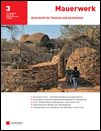
Mauerwerk
Scope & Guideline
Pioneering advancements in masonry and construction technologies.
Introduction
Aims and Scopes
- Masonry Materials and Techniques:
The journal examines various types of masonry materials, including traditional bricks and modern alternatives like autoclaved aerated concrete (AAC). It explores innovative construction techniques, emphasizing the durability and sustainability of these materials. - Structural Analysis and Safety:
Research on the structural behavior of masonry under different conditions, including seismic activity and moisture penetration, is a core focus. This includes experimental studies and the development of calculation models to enhance safety standards. - Sustainability and Decarbonization:
A significant aim of the journal is to promote sustainable practices within the construction industry. This includes exploring ways to reduce carbon footprints through innovative building designs and materials. - Digital Transformation in Construction:
The journal addresses the integration of digital tools and methodologies, such as Structural Information Modeling (SIM), to improve building diagnostics and construction processes. - Recycling and Reuse of Materials:
An important scope involves the investigation of recycling practices for masonry materials, focusing on their lifecycle assessment and potential for reuse in sustainable construction.
Trending and Emerging
- Climate Resilience and Adaptation:
There is an increasing emphasis on climate resilience in construction practices, focusing on how masonry can be designed and constructed to withstand extreme weather conditions. This is crucial as climate change poses new challenges for the construction industry. - Digital Tools and Modeling in Construction:
The incorporation of digital tools, particularly Structural Information Modeling (SIM), is gaining traction. This trend reflects the industry's push towards digitization for improved efficiency and accuracy in building diagnostics and construction management. - Decarbonization Strategies in Construction:
The focus on decarbonization within the construction industry is emerging as a critical theme. Research exploring pathways to a greenhouse gas neutral masonry industry is increasingly relevant and aligns with global sustainability goals. - Innovative Material Use and Recycling:
There is a marked trend towards exploring new materials and recycling methodologies. This includes studies on the reuse of bricks and sustainable alternatives, indicating a strong interest in circular economy practices within the masonry sector.
Declining or Waning
- Traditional Masonry Techniques:
As the industry moves toward more innovative and sustainable practices, traditional masonry techniques have seen a decrease in focus. This shift may be due to the growing emphasis on modern materials and construction methods that promise enhanced efficiency and sustainability. - Historical Masonry Studies:
Research centered on historical masonry structures and techniques has become less prominent. The journal's recent publications suggest a trend towards contemporary applications and materials, overshadowing the historical context. - Conventional Energy Efficiency Measures:
While energy efficiency remains important, the focus on conventional methods has waned in favor of more holistic and innovative approaches. The journal is increasingly oriented towards advanced technologies and materials that contribute to energy neutrality.
Similar Journals

Masonry Society Journal
Innovative insights shaping the future of construction.Masonry Society Journal, published by the Masonry Society, is a pivotal resource in the field of masonry and construction materials. With a dedicated ISSN of 0741-1294, this journal aims to disseminate cutting-edge research, innovative practices, and technical insights that contribute to the advancement of masonry science and application. Although not openly accessible, the journal serves as a vital platform for academics, professionals, and students alike, providing valuable knowledge that enhances the quality and safety of masonry structures worldwide. Located in Boulder, Colorado, the Masonry Society Journal is committed to fostering community engagement in research and education, making it a crucial reference for those seeking to deepen their understanding of masonry technologies and their implications in contemporary building practices.

Journal of Building Engineering
Driving Quality and Reliability in Engineering PracticesWelcome to the Journal of Building Engineering, a premier platform for the dissemination of innovative research in the fields of Architecture, Building and Construction, Civil and Structural Engineering, Mechanics of Materials, and Safety, Risk, Reliability and Quality. Published by ELSEVIER and based in the Netherlands, this journal has solidified its reputation as a leader in the field, proudly achieving a prestigious Q1 ranking across multiple categories as of 2023. With a remarkable impact in Scopus, including being ranked #1 in Architecture and consistently placing within the top 20 in other critical disciplines, the journal is dedicated to fostering high-quality research that addresses contemporary challenges in building technology and engineering practices. The E-ISSN 2352-7102 further facilitates access to groundbreaking articles from 2015 to 2024, making it a vital resource for researchers, industry professionals, and students alike. Embrace the opportunity to engage with cutting-edge studies that not only contribute to academic dialogue but also influence practical applications in the rapidly evolving landscape of building engineering.

ACI STRUCTURAL JOURNAL
Advancing Concrete Innovation for Tomorrow's StructuresThe ACI Structural Journal, published by the American Concrete Institute, serves as a premier platform for scholarly articles and research findings in the fields of building and construction and civil and structural engineering. With a commitment to advancing concrete technology and its applications, this journal has amassed an impressive reputation, holding a Q2 ranking in both Building and Construction and Civil and Structural Engineering categories as of 2023. The journal’s focus on innovative research and practical applications enables professionals, researchers, and students to stay at the forefront of industry developments. Although it does not offer open access, the content bears significant impact, ensuring that readers engage with high-quality research. As the journal converges its years of publication from 1987 to 2024, it continues to enrich the academic and professional discussions surrounding structural engineering and concrete science.
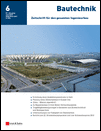
Bautechnik
Elevating standards in building and civil engineering scholarship.Bautechnik is a premier academic journal in the fields of Building and Construction and Civil and Structural Engineering, published by ERNST & SOHN in Germany. With a history dating back to 1969 and a significant converged timeline through various years, this journal offers a rich repository of peer-reviewed research dedicated to advancing the principles, methodologies, and innovations within its domains. Bautechnik is currently ranked in the Q3 category for both building and construction, as well as civil and structural engineering, indicating its relevance and contribution to the academic community. Though it does not offer open access, its curated content is accessible to a global audience of researchers, professionals, and students striving for excellence in their fields. The journal aims to foster discussions and disseminate knowledge that impacts the future of construction, architecture, and engineering practices.
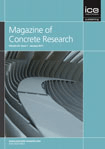
MAGAZINE OF CONCRETE RESEARCH
Advancing Concrete Knowledge for Tomorrow's StructuresThe Magazine of Concrete Research, published by Emerald Group Publishing Ltd, is a pivotal journal in the fields of Building and Construction, Civil and Structural Engineering, and Materials Science, boasting an impressive track record since its inception in 1949. As of 2023, it holds a Q2 category ranking across its related disciplines, indicating its strong influence and credible contributions to the field with Scopus ranks placing it favorably among its peers. With an emphasis on advancing knowledge surrounding concrete technology and construction practices, this journal serves as a key resource for researchers, industry professionals, and students alike. Though not Open Access, the Magazine of Concrete Research continues to cut through the complexities of concrete-related innovations, inspiring advancements in both academic research and practical applications. Engage with the latest findings and technological developments in concrete research, ensuring you stay at the forefront of this essential field.
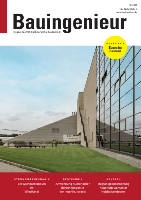
Bauingenieur
Exploring Innovations in Civil and Structural EngineeringBauingenieur, an established journal in the field of Building and Construction and Civil and Structural Engineering, has been a significant platform for scholarly discourse since its inception in 1969. Published by VDI FACHMEDIEN GMBH & CO KG UNTERNEHMEN FACHINFORMATIONEN in Germany, this journal, available in both print (ISSN: 0005-6650) and electronic formats (E-ISSN: 1436-4867), serves as a vital resource for researchers, professionals, and students dedicated to advancing knowledge and practice in engineering. Although currently without open access options, Bauingenieur aspires to contribute to the academic community by presenting cutting-edge research, case studies, and technical reviews within the realms of construction and civil engineering. As evidenced by its categorizations in the 2023 Scopus rankings, where it has a Q4 designation in both relevant categories, it provides an essential resource for understanding current trends and challenges in the industry. The journal welcomes contributions that push the boundaries of knowledge and foster innovative solutions in the built environment.

Developments in the Built Environment
Exploring innovative design and engineering for a resilient future.Developments in the Built Environment, published by ELSEVIER, is a premier open-access journal dedicated to advancing knowledge across multiple facets of the built environment, including architecture, building and construction, civil and structural engineering, and computer-aided design. Since its inception in 2020, this journal has established an impressive Q1 ranking across various categories, reflecting its commitment to high-quality peer-reviewed research and its influential presence in the field, as evidenced by its strong Scopus rankings, such as Rank #7 in Engineering - Architecture. With an open-access model, it ensures that groundbreaking research is accessible to all, supporting the dissemination of innovative ideas and practices within the global community. Researchers, professionals, and students are encouraged to contribute to the discourse on sustainable design and technology, making this journal an essential resource for anyone engaged in the future of built environments.

STEEL AND COMPOSITE STRUCTURES
Transforming Ideas into Structural ExcellenceSTEEL AND COMPOSITE STRUCTURES is a leading academic journal published by TECHNO-PRESS, dedicated to the fields of Building and Construction, Civil and Structural Engineering, and Materials Science. With a notable Impact Factor and classified in Q1 and Q2 quartiles in multiple relevant categories as of 2023, the journal provides a high-quality platform for the dissemination of innovative research from its converged publishing years of 2004 to 2024. The journal's rigorous peer-review process ensures that only the most impactful studies receive publication, fostering advancements in composite materials and steel structures. Researchers, professionals, and students alike can gain valuable insights into current technologies and applications in these critical fields, making STEEL AND COMPOSITE STRUCTURES an essential resource for anyone involved in structural engineering and materials research. The journal is based in South Korea, and while it offers traditional access options, the breadth of its contributions ensures a global reach and influence.

International Journal of Concrete Structures and Materials
Elevating Standards in Civil and Structural EngineeringThe International Journal of Concrete Structures and Materials, published by SPRINGER, is a premier open-access journal dedicated to the field of civil and structural engineering, with a strong emphasis on concrete materials and their diverse applications. With an ISSN of 1976-0485 and E-ISSN of 2234-1315, this journal has established itself as a crucial resource since its inception in 2012, addressing pressing challenges in structural integrity and durability. With a remarkable impact factor and ranking in the Q1 category for both Civil and Structural Engineering and Ocean Engineering, this journal has garnered recognition and respect, ranking #18 out of 105 in Ocean Engineering and #81 out of 379 in Civil and Structural Engineering as per Scopus metrics. The journal’s open-access policy enhances the dissemination of knowledge, making cutting-edge research readily available to a global audience. Aimed at researchers, practitioners, and students alike, the International Journal of Concrete Structures and Materials strives to promote advancements in concrete technology and foster innovative solutions for contemporary engineering problems.
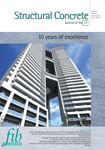
Structural Concrete
Innovative Insights for Structural ExcellenceStructural Concrete, published by ERNST & SOHN, is a premier journal dedicated to the field of Civil and Structural Engineering, focusing on innovative research and advancements in concrete materials and technologies. With an impressive impact factor and a consistent ranking in the Q1 category of both Building and Construction and Civil and Structural Engineering, the journal stands as a vital resource for researchers, professionals, and students alike. It is indexed with notable Scopus ranks, underscoring its significance within the academic community. The journal spans a comprehensive scope (from 2001 to the present) that encompasses diverse topics related to the behavior, design, and application of structural concrete. Although not an open access publication, it offers valuable insights and cutting-edge knowledge that contribute to the ongoing evolution of construction practices and materials science. Structural Concrete is an essential platform for sharing pioneering findings and fostering collaboration within this dynamic field.